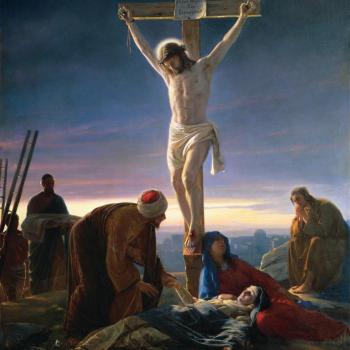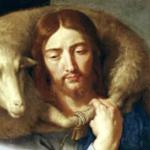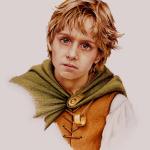“And God saw everything that he had made, and behold, it was very good” (Gen.1:31a RSV). The world is good because it is created by God and for God’s own purpose. It was made as a representation of his glory. All that is within it can and does glorify God. “O LORD, how manifold are thy works! In wisdom hast thou made them all; the earth is full of thy creatures” (Psalms 104:24 RSV).
One of the grave problems which faces us today is the way humanity objectifies the things of the world and see all things as mere instruments for their will. The world is not allowed to follow through with its God-given design, but is instead, it is stripped of its glory by the selfish deeds of humanity. It is one of the key problems which unites all the major problems of the world today. We look at any other and turn it into an instrument of our will. The only credit we give to them is the way in which they satisfy our passions. The whole culture of death is founded on the destruction of the other, turning their living, subjective value into objectified corpses. Is there no surprise that what we do with the world we turn in and do to ourselves? Pope John Paul II puts this succinctly in Evangelium Vitae, pointing out the connection between the affirmation of God with the affirmation of God’s creation, and the abuse of God’s creation with the rejection of God:
Moreover, once all reference to God has been removed, it is not surprising that the meaning of everything else becomes profoundly distorted. Nature itself, from being “mater” (mother), is now reduced to being “matter”, and is subjected to every kind of manipulation. This is the direction in which a certain technical and scientific way of thinking, prevalent in present-day culture, appears to be leading when it rejects the very idea that there is a truth of creation which must be acknowledged, or a plan of God for life which must be respected.[1]
Humanity was created to glorify God and to act as God’s stewards over creation so as to help the rest of the world achieve their own God-given goals. “As kings, we have the power of life and death over them, and the right to exercise it in accordance with the principles of justice and mercy; but we have the parallel duty, not only to God but to the, to love them and protect them — looking forward to the day when they shall live in harmony in ‘the glorious freedom of the children of God.'”[2]
The world and what is in it has more value than what human objectification can make of it. We were not made to be tyrants but benefactors. Sin objectifies the world, trapping what is in it to the dictates of fallen pride, while grace liberates the world, allowing the world to find its perfection. Sin leads to death because it seeks nothing but lifeless objects of the will. A culture based upon the mere objectification of the world can only be a culture of death. The more one lives out that culture, the more they will destroy what is around them and kill that which is alive. Only by renouncing the will to power can we overcome the culture of death and its manifold manifestations of tyranny. It is for this reason we must move beyond the instrumentalization of nature, beyond the way of objectification, and into the just and merciful kings looking out for the needs of creation. We must look to our past and realize how we have often failed to live out the moral obligation given to us, the obligation to protect life, all life, and to affirm the dignity of life — not just human life, but all life, because it was created by God. “As with the example given by John Paul II concerning the evil of capital punishment, we should seek to witness to the dignity of life in everything we do, even in those areas of our lives where it has not been our concern.”[3]
The Catechism of the Catholic Church affirms this point: “Animals are God’s creatures. He surrounds them with his providential care. By their mere existence they bless him and give him glory. Thus men owe them kindness. We should recall the gentleness with which saints like St. Francis of Assisi or St. Philip Neri treated animals.”[4] Of course, as the Catechism points out, there is an order of grace, and humanity has been given a special place in that order, so that human concerns are to be given their rightful place and not be neglected for the sake of animals. “It is contrary to human dignity to cause animals to suffer or die needlessly. It is likewise unworthy to spend money on them that should as a priority go to the relief of human misery. One can love animals; one should not direct to them the affection due only to persons.”[5] This does not mean, however, that their concerns do not affect human concerns; as is well known, the interdependence of the world and its ecosystems requires us to be concerned about the wellbeing of animals because their wellbeing also affects our own (if not immediately, then in the near future). This is why a simple reading of this text cannot be used to dismiss the needs of animals and their welfare: it must be seen within the context of their relationship with us.
This relationship, however, is not as easy as many assume. The Catechism tells us we are not to give to them the love as is accorded to persons. Now, if it is understood that we should not consider them to be human persons (as the context suggests), then the point is that we must understand the hierarchy of being and affirm those who are higher up on the hierarchy are accorded greater worth and value without, however, denigrating those who are lower up on the chain of being. On the other hand, there is also the inclination of the text to suggest animals cannot be seen as persons.[6] The text is vague and does not define itself here, but one could do as I suggest, and read it as meaning they are not human persons, but in doing so, one must acknowledge the tradition which suggests animals are not, in themselves, capable of being persons. Many people treat that as a given, as if it were a part of revealed truth. It is, however, not; rather, it is an assumption which has followed us through generations without much questioning, and they are based upon outdated biological understandings of animals and the animal world.
What do I mean by this?
Perhaps one such example is the understanding that each individual animal is not unique — that each can replace each other easily in their social order, and there will be no differences in outcome. Such an understanding can only come from a-priori categorization of animal individuality, because any long-lasting interaction with animals shows something quite differently as Petroc and Eldred Willey point out:
We may often regard animals as substitutable repetitions of a type, but it is clear that animals themselves do not. One important learning function in birds and mammals is the development of personal recognition of specific individuals. The ability to respond differently to specific creatures is an essential prerequisite for two of the fundamental features of closed animal societies: the distinction between members and non-members of the group, and the internal hierarchy prevailing among group members. Hen Agatha learns to act in one way towards hen Betty and in another way towards hen Clarissa. Each has her own place in the pecking order and in this way finds her identity in the community. If Betty or Clarissa were replaced by another hen she would have a different place in the whole and to that extent a different identity. [7]
Here we see animal social relations differentiate animals from each other, and their interactions with each other points to unique personalities among the animals (at least within the higher orders of life, which we have better ability to understand). Because of this insight, there is a growing number of Christians, from a variety of faith traditions, which suggest we might indeed have to recognize animals as being persons. Elizabeth Theokritoff explains how two Orthodox thinkers, Olivier Clément and Tatiana Goricheva have come to realize this possibility:
Clément sees Adam’s naming of the animals as an act of relationship, an act bringing them into communion with God through man’s mediation; Goricheva actually speaks of it as an act of raising them to some kind of personal existence. As an instance of this ‘personal’ quality, she refers to incidents in the lives of the early martyrs, where the bodies of animals who refused to harm the saints, and were killed as a result, were themselves found to be incorrupt. Clément, too, suggests that animals may have a rudimentary ‘personhood.’ It is easier to envisage what this might mean with dogs and cats, or horses, or dolphins, than with, say, caterpillars or corals; but an important point is being made here. Most people now recognize how much we have in common with other living creatures in our biological existence; perhaps we should be open to the possibility that the commonalities carry over into the mystery of personal existence.[8]
What exactly makes one to be a person is a question which has not been given any concrete answers, though modern personalism sees it as an issue of relationships, and if we look at persons within that context, we begin to see that such relationships exist not just in humanity, but in the animal world as well. Indeed, the loving relationship between a mother and her young is often used as the source by which humans find and begin to appreciate their own personal nature.[9] Such, of course, is not found with humans alone; though not all animals take care of their young or live in families, perhaps we should recognize the personality and personal development which happens in those which do. And with those who do not, there nonetheless remains distinctions which turn each individual into more than mere repetition (though, the lower on the chain of being, one can say there is less freedom for self-manifestation and more pure necessity and repetition involved).
We have a long history of misunderstanding animals, looking at them are mere mechanisms, as mere playthings of humanity, as things to control and without a destiny of their own. But we must understand, not everyone has understood them in this fashion. In the early centuries of the Christian era, there was a debate on the status of animals, and some like Plutarch and Porphyry wrote favorable of their abilities, explaining why they believed reason could be attributed to them. The apologist, Arnobius, also seems to follow this tradition, suggesting a reason why we fail to recognize their ability:
But we have reason, one will say, and excel the whole race of dumb animals in understanding. I might believe that this was quite true, if all men lived rationally and wisely, never swerved aside from their duty, abstained from what is forbidden, and withheld themselves from baseness, and if no one through folly and the blindness of ignorance demanded what is injurious and dangerous to himself. I should wish, however, to know what this reason is, through which we are more excellent than all the tribes of animals. Is it because we have made for ourselves houses, by which we can avoid the cold of winter and heat of summer? What! do not the other animals show forethought in this respect? Do we not see some build nests as dwellings for themselves in the most convenient situations; others shelter and secure themselves in rocks and lofty crags; others burrow in the ground, and prepare for themselves strongholds and lairs in the pits which they have dug out? But if nature, which gave them life, had chosen to give to them also hands to help them, they too would, without doubt, raise lofty buildings and strike out new works of art. Yet, even in those things which they make with beaks and claws, we see that there are many appearances of reason and wisdom which we men are unable to copy, however much we ponder them, although we have hands to serve us dexterously in every kind of work.[10]
Arnobius tells us that we can look for manifestations of reason in animal art based upon our physical abilities, not theirs; yet, as he points out, if we move beyond the ways we express our own art and our own forms of building which present to the world our reason, and look to the animal world, they construct according to their own understanding and physical abilities. Indeed, if we look at these constructions, we will recognize they are distinct; they are not made out of pure instinct (just as our development of shelter is not mere instinct), even if the instinct for shelter affects them (but it does so for us as well). If we watch animals in their activity, we will see there are decisions and choices being made; while there realm of freedom and choice might be less than ours, the fact that they can create distinctive creations from their range of choices suggests a relative and not essential difference between our freedom and theirs.
Art, the beautifying of creation, can only be understood as a free act. Art, of course, draws out the interior qualities of the surfaces being used to bring out their beauty better; indeed, this action requires considerable effort and artistic integrity; the ability to do so is what creates a masterpiece. “True art is a unity of content and the means by which they are expressed.”[11] It is for this reason that St. Albert, while right in recognizing the ability of animals to produce art, is wrong when he suggests it is all mere instinct, just as much as it would be wrong to say a human artist is creating works by instinct.[12]
One can admit, in the human as well as in the animal, aspects of instinct being involved in the creation of the art, but to the extent that we can observe a psychic realm for animals, they have the ability to create distinct works of art. They have the ability not only to build, but to develop constructions which differ from one another, based upon the choices they make for their constructions. This indicates that within the minds of animals, inquiry is going on, and decisions are being made. Porphyry expresses quite well that the ability for animals to do art, either on their own, or to be trained to do some which they normally would not do on their own, indicates the fact that animals possess a level of reason:
Since, also, brutes acquire a knowledge of the arts, and these such as are human, and learn to dance, to drive a chariot, to fight a duel, to walk on ropes, to write and read, to play on the pipe and the harp, to discharge arrows, and to ride, — this being the case, can you any longer doubt that power which is receptive of art, since the recipient of these arts may be seen to exist in them? For where will they receive them, unless reason is inherent in them in which the arts subsist? For they do not hear out voice as if it was a mere sound only, but they also perceive the difference in the meaning of the words, which is the effect of rational intelligence.[13]
While St. Albert misunderstood animals, he did see something which highlights, once again, their relational ability, and provides for us something to ponder as we try to discern whether or not they might be persons in their own right: they, like us, have an understanding of friendship and enmity: “It should be said that friendship and enmity are found in brute animals. The reason for this is that friendship consists in the perception of what is agreeable and enmity in the perception of what is harmful.”[14] Such an ability, as St. Albert points out, helps for survival. But do we want to limit our own social structures and relationships as coming from a survival instinct, or do we want to see in them something about the human condition which transcends the survival instinct? And if we have more than mere survival involved in our social distinctions, is that not the case with animals? Just go outside and observe them — watch them interact. Watch them at play! Clearly, their associations help them beyond mere material survival, but provide emotional stability as well.
We must understand, as St Albert did, that animals, like us, have spirits.[15] They are therefore given a level of freedom which moves them beyond material necessity, even if, like for us, material necessity affects them and how they act. But to reduce them to their material value and their necessary functions is to ignore the freedom contained in their actions which makes them more than automatons but creatures capable of great good, including, as the lives of so many saints as well as Holy Scripture shows us, praise of God:
Beasts and all cattle, creeping things and flying birds! Kings of the earth and all peoples, princes and all rulers of the earth! Young men and maidens together, old men and children! Let them praise the name of the LORD, for his name alone is exalted; his glory is above earth and heaven. (Psalms 148:10-13 RSV)
If this so, why has this recognition been uncommon in the Christian tradition?
One answer is scientific. Much of what was known about the biological sciences were assumptions which have been modified through the years. We observe and understand what we are best, so human biological development has been much more quickly applied to our theological reasoning than the other biological sciences, and yet that kind of updating is needed for the animal creation as well. The schoolmen understood the need to use the best, most up to date, scientific reasoning in engaging such questions, but for some reason, we have let their conclusions remain even if the premises for them have been completely overturned. If, for example, the ability of speech is indeed an indication of reason, because speech indicates the ability to generalize thought,[16] then when we find forms of communication among animals,[17] we must see that as a representation of reason within animals, even if the level of reasoning ability is less in comparison to ours.
But perhaps there is something more fundamental which also has led us to quickly dismiss the possibility of animal personhood: human pride. St. Bonaventure says that such pride, which has been a kind of self-idolatry, has led humanity to misconstrue the creatures of the earth:
All incorrect evaluations of creatures come either from a sense of high-mindedness, or from the desire for sufficiency, or from pleasure. The first way is the idolatry of the proud, the second is the idolatry of the greedy, and the third is the idolatry of the lascivious.[18]
As long as we can be kept into such pride, and led to instrumentalize the world instead of treating it as a subject of its own worth, the demonic powers will continue to manipulate us and lead us into error after error, sin after sin. Abuse of nature has come from such objectification of the world. As St. Antony the Great relates, we are being led to do that which we should not do (often with an apparent good behind it) by all kinds of deceits:
The evil spirits make us zealous for works which we are not able to perform, and cause us to faint in tasks on which we are engaged, and which are profitable for us. Therefore they make us laugh when it is time for weeping, and weep when it is time for laughter, and simply turn us aside every time from the right way. And there are many other deceits whereby they make us their slaves, but there is no time to describe all this. But when they fill our hearts with these deceits, and we feed on them and they become our food.[19]
The deceit before us is the deceit of pride. We must overcome it and humbly put ourselves back into the service of God, looking after the world, his great and glorious creation, because it is the good work of God’s loving hands. As Pope John Paul II points out, St Francis of Assisi represents this ideal, the loving servant, the poor man who seeks nothing for himself, but helps reestablish the harmony of all creation:
He offers Christians an example of genuine and deep respect for the integrity of creation. As a friend of the poor who was loved by God’s creatures, Saint Francis invited all of creation – animals, plants, natural forces, even Brother Sun and Sister Moon – to give honour and praise to the Lord. The poor man of Assisi gives us striking witness that when we are at peace with God we are better able to devote ourselves to building up that peace with all creation which is inseparable from peace among all peoples.[20]
Might we follow the example of St Francis, so with him, we can sing: “Praised be You, my Lord, with all Your creatures!”[21] Whether or not a re-examination of the question of personhood itself would lead to our recognition persons within the animal realm, the fact that saints such as St Francis of Assisi, St Anthony of Padua, Seraphim of Sarov and Pope Kyril VI of Alexandria related to them as if they were persons should give us at least the hope that either they are or might be one day be persons. For the sake of God, let us honor them better; let us respect them and be good kings over them. Anything else is an abdication of our duty and will lead to sin and death.
Footnotes
[1] Pope John Paul II, Evangelium Vitae. Vatican Translation 22.
[2] Huw Spanner, “Tyrants, Stewards — or Just Kings?” Animals on the Agenda. Ed. Andrew Linzey and Dorothy Yomamoto (London: SCM Press Ltd., 1998), 224.
[3] John Burkman, “Is the Consistent Ethic of Life Consistent without a Concern for Animals?” Animals on the Agenda. Ed. Andrew Linzey and Dorothy Yomamoto (London: SCM Press Ltd., 1998), 246. John Burkman is saying this based upon his own analysis of EV. While he points out the chief concern is about human relationships, he points out, and quite rightfully, that the text doesn’t end there, and looks for the dignity of all creation:
“The first error — the instrumentalization of nature– occurs when nature is given only instrumental value, when it no longer has its God-given integrity and dignity: ‘Nature itself, from being “mater” (mother), is now reduced to being matter, and is subjected to every kind of manipulation.’ Often, this view goes further and ‘rejects the very idea that there is a true of creation which must be acknowledged, or a plan of God for life which must be respected.’ In contrast to these views, John Paul argues repeatedly that humans must observe moral laws in regard to other creatures in particular and to nature more generally,” ibid., 240.
[4] Catechism of the Catholic Church, Vatican Translation. , ¶ 2416.
[5] ibid., ¶2418.
[6] My own intuition and inclination is either there already are “animal persons” or that, through theosis, animals will be raised up to the level of persons through the order of grace. This is speculative and what I say here on this matter is itself on the level of such speculation and is capable of being reformed as need be.
[7] Petroc and Eldred Willey, “Will Animals be Redeemed” in Animals on the Agenda. Ed. Andrew Linzey and Dorothy Yomamoto (London: SCM Press Ltd., 1998), 197-8.
[8] Elizabeth Theokritoff, Living in God’s Creation: Orthodox Perspectives in Ecology (Crestwood, NY: St Vladimir’s Seminary Press, 2009), 221.
[9] This is of course a fundamental feature of Hans Urs von Balthasar’s theology. See, for example, Hans Urs von Balthasar, Unless You Become Like This Child. Trans. Erasmo Leiva-Merikakis (San Francisco: Ignatius Press, 1991), 16 – 19 for one example of how Balthasar deals with this theme.
[10] Arnobius, Seven Books Against The Heathens in ANF6, 441 (Book II, c. 17).
[11] Pavel Florensky, “The Church as a Synthesis of the Arts” in Pavel Florensky: Beyond Vision. Trans. Wendy Salmond. Ed. Nicolette Misler (London: Reaktion Books, 2002), 105.
[12] “Thus, one may say in brief that brute animals make works of art, but nevertheless do not do so by art but rather by nature. And this is why they always act in a uniform way, as nature does, unless they are impeded by something external,” St. Albert the Great, Questions Concerning Aristotle’s On Animals. Trans. Irven M. Resnick and Kenneth F. Kitchell Jr. (Washington, DC: The Catholic University of America Press, 2008), 272.
[13] Porphyry, “On the Abstinence From Animal Food” in Select Works of Porphyry. Trans. Thomas Taylor (Frome, Somersat: The Prometheus Trust, 1994), 93 (III-15).
[14] St. Albert, Questions Concerning Aristotle’s On Animals, 268.
[15] See ibid., 485-6.
[16] St. Bonaventure expresses quite well the pattern by which communication is done:
“Considering speech in relation to the speaker, we see that all speech signifies a mental concept. That inner concept is the word of the mind and its offspring which is known to the person conceiving it. But in order that this concept may become known to the hearer, it assumes the form of the voice; and by means of this clothing, the intelligible word becomes sensible and is heard externally. It is received into the ear of the listener and yet does not depart from the mind of the person uttering it,”St. Bonaventure, On the Reduction of the Arts to Theology. Trans. Zachary Hayes, O.F.M. (St Bonaventure, NY: St. Bonaventure University, 1996), 53..
[17] And who among those who actually engage animals do not see such communication? Even if we do not understand it, we can see the animals themselves understand their own expressions, one to another. The expressions and concepts might be simple, but, with animals further up the chain of being, we should not even assume that. Many scientific studies indicate they many kinds of animals might indeed have highly sophisticated levels of thought (at least in comparison to what we once assumed for them). Indeed, animals not only can communicate with each other, we can, in some way learn to communicate with them — as Montaigne points out: “And why should they not speak to one another? they speak very well to us, and we to them; in how many several ways do we speak to our dogs, and they answer us? We converse with them in another sort of language and other appellations than we do with birds, hogs, oxen, and horses; and alter the idiom according to kind.” Michael Eyquem de Montaigne, The Essays. Trans. Charles Cotton (Chicago: Encyclopedia Britannica, Inc., 1952), 218 (Essays II.12).
[18] St. Bonaventure, Collations on the Ten Commandments. Trans. Paul J. Spaeth . (St Bonaventure, NY: St. Bonaventure University, 1995), 42.
[19] St Antony the Great, The Letters of St. Antony. Trans. Derwas J. Chitty (Fairacres, Oxford: SLG Press, 1991), 19.
[20] Pope John Paul II, Message for World Peace Day 1990, ¶ 15. (http://www.vatican.va/holy_father/john_paul_ii/messages/peace/documents/hf_jp-ii_mes_19891208_xxiii-world-day-for-peace_en.html).
[21] St. Francis of Assisi, Canticle of the Creatures in Francis of Assisi: The Saint. Ed. Regis Armstrong, O.F.M Cap..; J.A. Wayne Hellmann, O.F.M. Conv., and William J. Short, O.F.M. (New York: New City Press, 1999), 113.
















